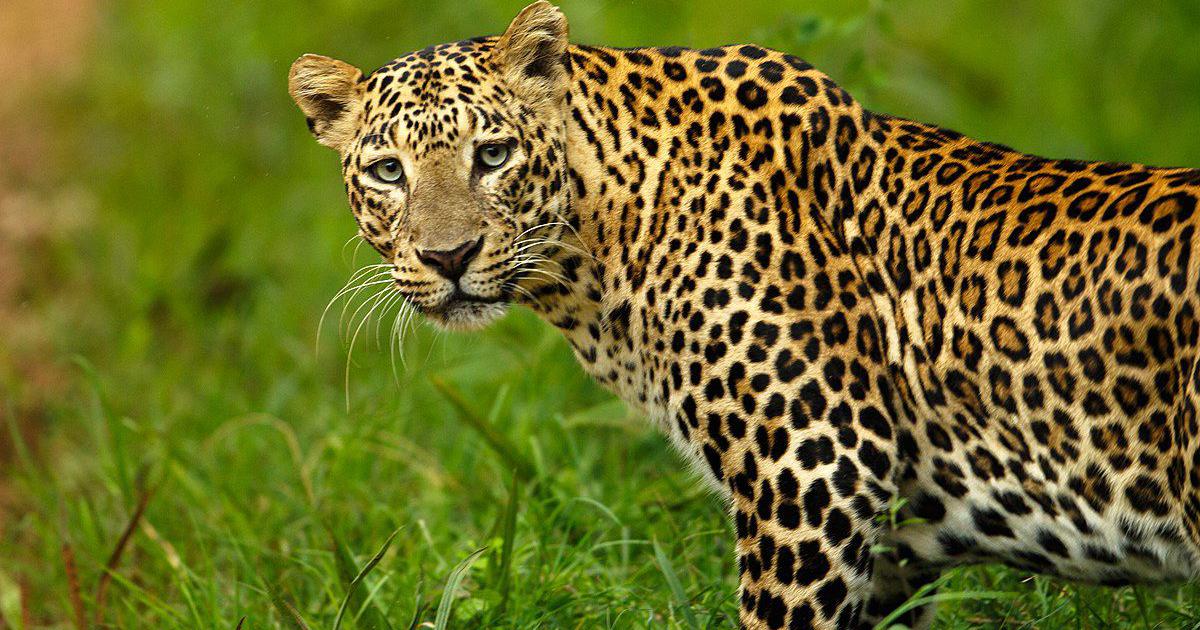According to the Status of Leopard in India, 2018 report, the leopard population in India has recorded an increase of more than 60 percent in 2018 as compared to 2014. The big cat’s numbers have risen sharply to 12,852 from 7,910 in the 2014 leopard census.
India is home to iconic, yet endangered wildlife like leopards and this has been proved by a recently published report which claimed that the leopard population in India has recorded an encouraging increase of more than 60 percent in 2018 as compared to 2014. The recent leopard census conducted across the country has revealed some positive aspects of the Indian wildlife spectrum.
Union minister for environment, forests and climate change Prakash Javadekar has declared the findings of the leopard census, pegging the population of the big cat in the country at 12,852. India’s leopard population has increased from 7,910 in 2014 to 12,852 in 2018, according to the latest estimates of the report. The data is a clear indication of the fact that the country is protecting its ecology and biodiversity well.
As per Status of Leopard in India, 2018 report Madhya Pradesh has the highest number of leopards (3,421), followed by Karnataka (1,783) and Maharashtra (1,690). It was also further revealed that these three states together account for more than 50 percent of the leopard’s population in the country.
Tiger state now also becomes leopard state:
Madhya Pradesh with 3,421 leopards emerged as the state with the highest leopard population. According to the report published, Madhya Pradesh accounts for around 26 percent of the total number of big cats estimated in the country. Compared to the 2014 estimation, when MP had reported 1,817 leopards, the state has added 1,604 leopards, marking an increase of more than 88 percent.
According to the reports, it can be rightfully said that the state that holds the tag of ‘Tiger State’ is now in the true sense is also a leopard state. Madhya Pradesh is home to 526 tigers. The number of leopards is better than those of tigers in the state because the latter has a suitable and well adaptive climate for survival.
Though the numbers are increasing in a righteous manner, there is still a fact to be taken into account that the state with such huge numbers is also witnessing a frequent rise in leopard-human conflicts outside protected areas.
Madhya Pradesh lost around 26 tigers this year out of 99 tigers that died in 2020 in the country. The state lost 172 tigers from 2012 to 2019. While there is no official data available for leopard death in India, a non-profit organisation, the Wildlife Protection Society in India has recorded around 435 leopard deaths in the year 2020 and 494 in the year 2019. Looking at this data, it becomes quite important to note that though Madhya Pradesh leads the gang of states when it comes to the leopard population, but if the present condition of animal-human conflict continues, the population can decline any moment.
Do leopards prefer north-eastern states?
With estimates of the report, it can be said that leopards prefer to live in the north-eastern states and edge of forest areas. The north-eastern landscape has 141 leopards out of 12,852 estimated across the country. The report claimed that the leopards are distributed widely in the north-eastern landscape. It is also believed that the leopard population is distributed from the high altitude of the eastern Himalayas to the forests adjacent to tea gardens in the flood plains.
But the estimations of the number of leopards are still not considered as the actual population because of the sampling inadequacy. The actual number of leopards could be more than recorded in the report because due to low detection and low sample size, the population was not estimated from Kaziranga and Namdapha tiger reserves.
The leopard population was estimated only from the camera trapped sites of northern West Bengal, Manas and Nameri tiger reserves of Assam, and the southern valley of the Pakke Tiger Reserve of Arunachal Pradesh. Therefore, the leopard population in the north-eastern states is estimated to more than what is currently present in the report.
Human-animal conflict needs to be managed
The census report also states that there have been increasing instances of man-animal conflicts. Leopards are widely distributed animals across the country because of their adaptable behaviour. But leopards venturing out into human-dominated landscapes are ending up in conflicts.
Therefore, the report suggested, “There is an increasing need for corridor connectivity, and improvement of habitat, to reduce interface with humans and thereby reducing the chance of conflict.”

